- Supports a healthy metabolism
- Supports appetite control
- Supports healthy muscles
- Nourishes healthy growth (Junior)
- Supports optimal weight (Adult)
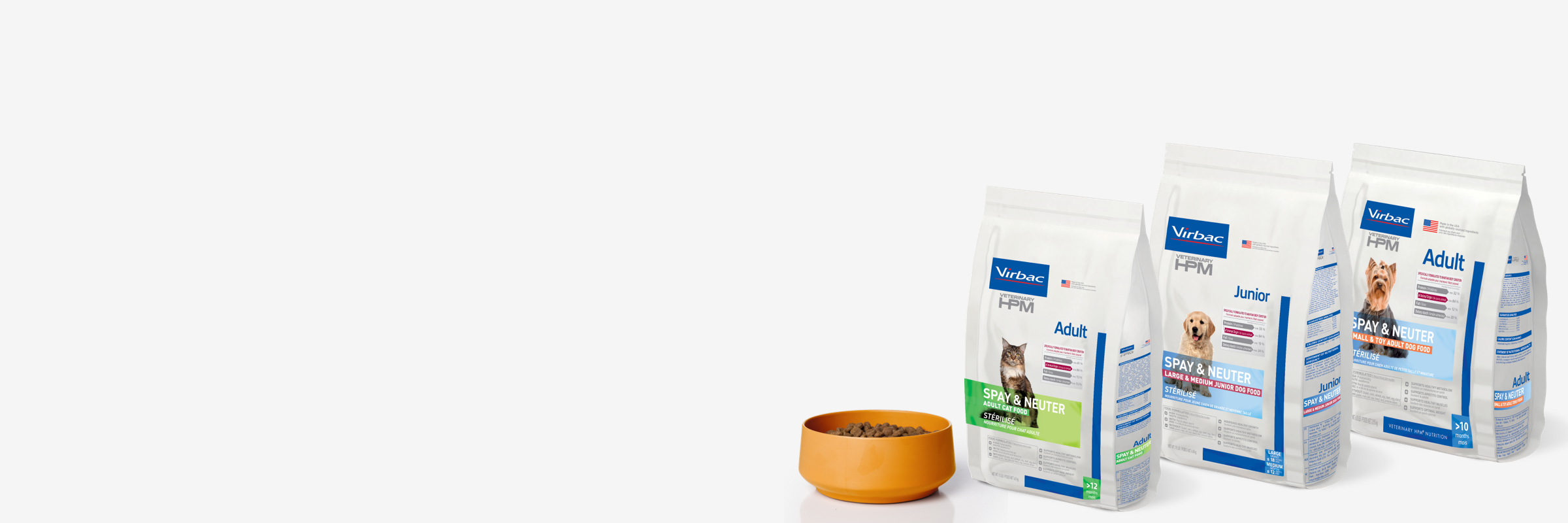
VETERINARY HPM® Pet Nutrition
Our flagship pet food brand provides balanced, evidence-based nutrition for spayed and neutered pets. We prioritize the calorie contribution from proteins, with moderate fat and minimal carbohydrates. Here you'll find an overview of our products and the product benefits.
![Cat Jr 6.5lb_WEB_210X210_face.png]() VETERINARY HPM® Spay & Neuter Junior Cat Food
VETERINARY HPM® Spay & Neuter Junior Cat Food
- Age: ≤12 months old
- Available package sizes: 3 lb • 6.5 lb
- Typical analysis (PDF)
- Amino acid profile (PDF)
- Feeding Guidelines (PDF)
![Cat Adult 15lb_WEB_210X210_face.png]() VETERINARY HPM® Spay & Neuter Adult Cat Food
VETERINARY HPM® Spay & Neuter Adult Cat Food
- Age: >12 months old
- Available package sizes: 3 lb • 6.5 lb •15 lb
- Typical analysis (PDF)
- Amino acid profile (PDF)
- Feeding Guidelines (PDF)
![Dog Jr 6.5lb Sm_WEB_210X210_face.png]() VETERINARY HPM® Spay & Neuter Small & Toy Junior Dog Food
VETERINARY HPM® Spay & Neuter Small & Toy Junior Dog Food
- Age: ≤10 months old
- Expected adult weight: toy dogs <11 lb | small dogs 11–22 lb
- Available package sizes: 3 lb • 6.5 lb
- Typical analysis (PDF)
- Amino acid profile (PDF)
- Feeding Guidelines (PDF)
![Dog Adult 6.5lb SM_WEB_210X210_face.png]() VETERINARY HPM® Spay & Neuter Small & Toy Adult Dog Food
VETERINARY HPM® Spay & Neuter Small & Toy Adult Dog Food
- Age: >10 months
- Expected Adult Weight: up to 22 lb
- Available package sizes: 3 lb • 6.5 lb • 15 lb
- Typical analysis (PDF)
- Amino acid profile (PDF)
- Feeding Guidelines (PDF)
![Dog Jr 15lb LG_WEB_210X210_face.png]() VETERINARY HPM® Spay & Neuter Large & Medium Junior Dog Food
VETERINARY HPM® Spay & Neuter Large & Medium Junior Dog Food
- Age: medium dogs ≤12 months | large dogs ≤18 months
- Expected adult weight: medium dogs 22–55 lb | large dogs >55 lb
- Available package sizes: 3 lb • 15 lb • 26 lb
- Typical analysis (PDF)
- Amino acid profile (PDF)
- Feeding Guidelines (PDF)
![Dog Adult 15lb LG_WEB_210X210_face.png]() VETERINARY HPM® Spay & Neuter Large & Medium Adult Dog Food
VETERINARY HPM® Spay & Neuter Large & Medium Adult Dog Food
- Age: medium dogs >12 months | large dogs >18 months
- Weight: medium dogs 22–55 lb | large dogs >55 lb
- Available package sizes: 3 lb • 15 lb • 26 lb
- Typical analysis (PDF)
- Amino acid profile (PDF)
- Feeding Guidelines (PDF)
When reducing the calorie intake of pets to meet their changed metabolic needs post-spay or -neuter, it matters how we do it. All our dog and cat foods prioritize protein as a primary source of metabolizable energy (ME). We also place a strong emphasis on animal proteins and include careful blends of mixed fibers to deliver nutrients that support pet satiety.
Learn how spaying and neutering change the protein needs of pets »
Get an overview of our pet food history and nutritional philosophy »
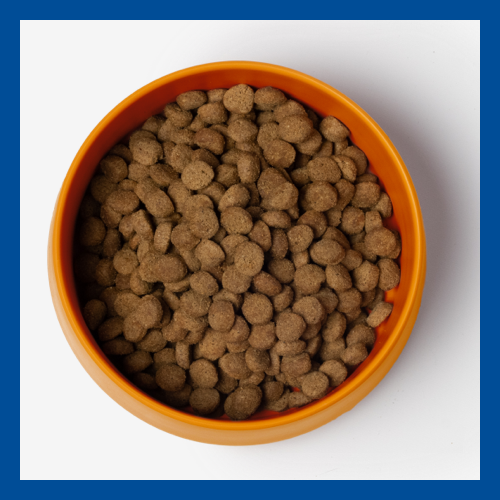
To meet the needs of spayed or neutered dogs and cats, we focus on animal proteins: ≥84% of the protein in VETERINARY HPM® Pet Food is animal protein.
Here’s an overview of why that’s important:
The more essential amino acids a protein contains — and the more digestible the protein is — the higher the quality of that protein.
- There are 10 amino acids that are essential to dogs and 11 that are essential to cats. Pet’s bodies aren’t able to synthesize these amino acids so they need to be included in their diets.
Animal-based proteins contain all essential amino acids and are more highly digestible than plant-based proteins.1–3
- Animal proteins provide more essential amino acids as compared to plant based proteins, including those that support appetite control.
- Plant-based proteins often come with additional fibers and “anti-nutrients” that may interfere with the digestion and absorption of other nutrients.
Ready to order VETERINARY HPM® pet food for your clinic? Order directly by registering your clinic at iVet, call 1-800-436-5909 or contact your Virbac representative.
Have questions about getting started? Contact Us
|


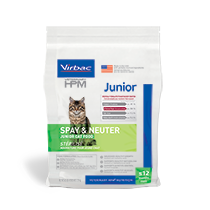 VETERINARY HPM® Spay & Neuter Junior Cat Food
VETERINARY HPM® Spay & Neuter Junior Cat Food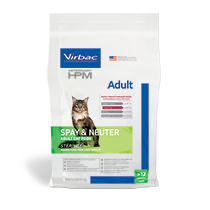 VETERINARY HPM® Spay & Neuter Adult Cat Food
VETERINARY HPM® Spay & Neuter Adult Cat Food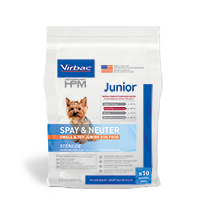 VETERINARY HPM® Spay & Neuter Small & Toy Junior Dog Food
VETERINARY HPM® Spay & Neuter Small & Toy Junior Dog Food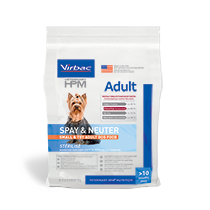 VETERINARY HPM® Spay & Neuter Small & Toy Adult Dog Food
VETERINARY HPM® Spay & Neuter Small & Toy Adult Dog Food VETERINARY HPM® Spay & Neuter Large & Medium Junior Dog Food
VETERINARY HPM® Spay & Neuter Large & Medium Junior Dog Food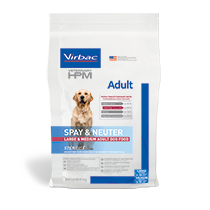 VETERINARY HPM® Spay & Neuter Large & Medium Adult Dog Food
VETERINARY HPM® Spay & Neuter Large & Medium Adult Dog Food